For this exhibition, the artist brings together familiar objects, organic materials and life-sized, fl oor-to-ceiling imagery to create an intricate tableau that explores industry, display and the contemporary workplace. The exhibition’s title “Learn the Rules Like A Pro, So You Can Break Them Like An Artist!” is a quotation attributed to Pablo Picasso. Lainé, who fi rst encountered the quotation as a motivational slogan on the walls of an offi ce space in the United States, is interested in its appropriation by the corporate sector. Lainé’s site-specifi c installation addresses the relationship between art, production and digital technology, as well as the boundary between our personal and professional lives. Featuring offi ce paraphernalia alongside intimate domestic items, it references the working environments of arts institutions; spaces that are home to a combination of creative and prosaic activity and are not usually on public view.
Emmanuelle Lainé is a recipient of the 2018 Artist Commission Program for the Montblanc Cultural Foundation’s Art Collection, which has enabled the creation of her site-specific exhibition in the HENI Project Space.
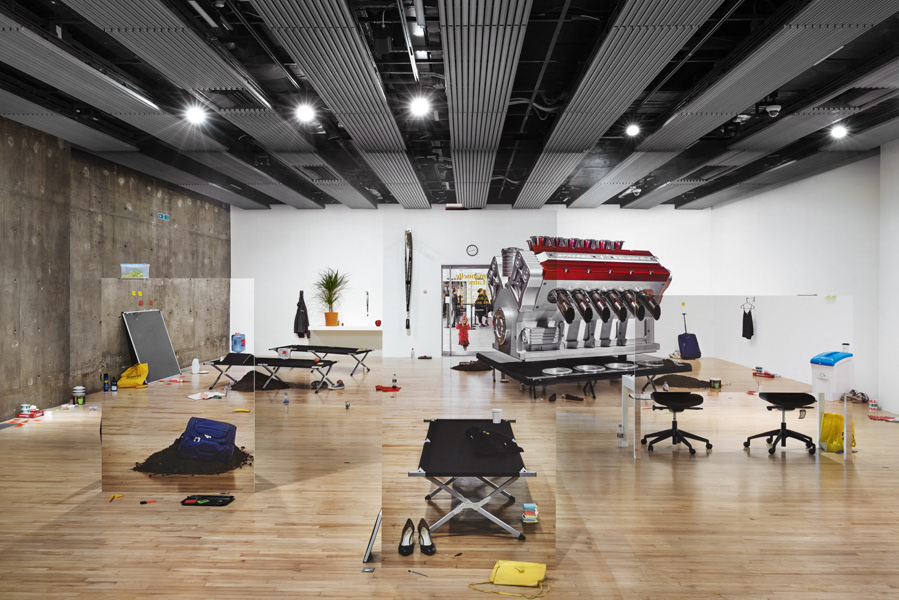
Emmanuelle Lainé, "Learn the Rules Like a Pro, So You Can Break Them Like an Artist!", Hayward gallery, exhibition view, credit: Thierry Bal

Emmanuelle Lainé, "Learn the Rules Like a Pro, So You Can Break Them Like an Artist!", Hayward gallery, exhibition view, credit: Thierry Bal
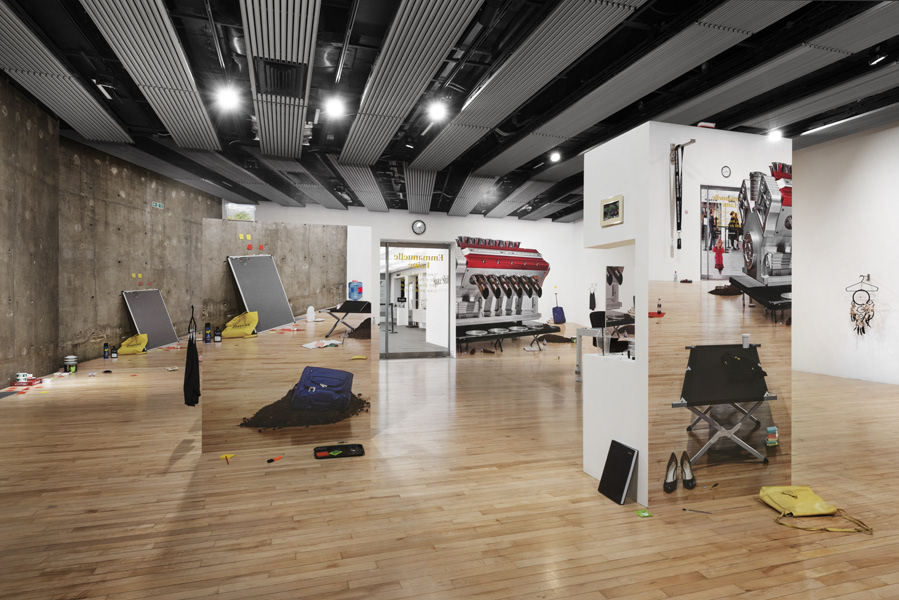
Emmanuelle Lainé, "Learn the Rules Like a Pro, So You Can Break Them Like an Artist!", Hayward gallery, exhibition view, credit: Thierry Bal

Emmanuelle Lainé, "Learn the Rules Like a Pro, So You Can Break Them Like an Artist!", Hayward gallery, exhibition view, credit: Thierry Bal
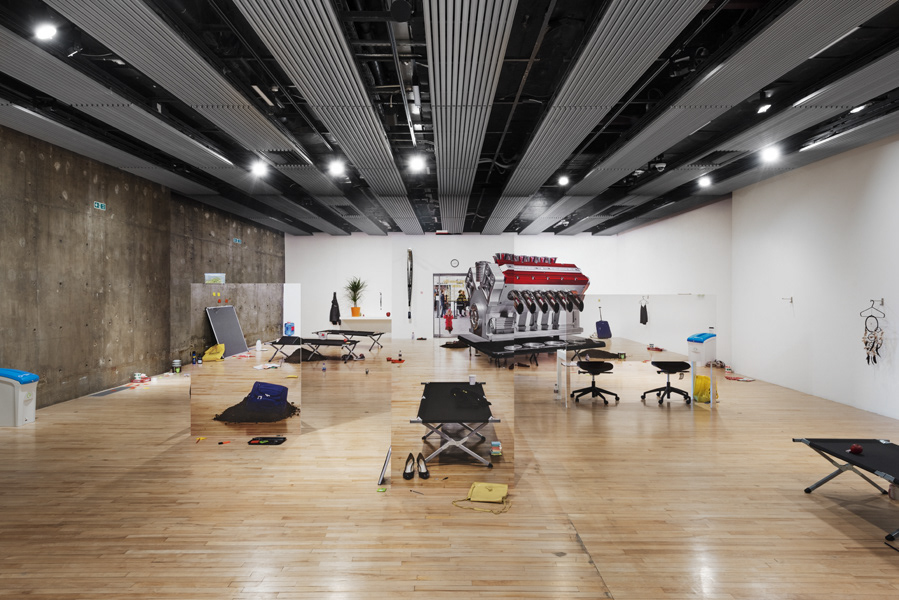
Emmanuelle Lainé, "Learn the Rules Like a Pro, So You Can Break Them Like an Artist!", Hayward gallery, exhibition view, credit: Thierry Bal
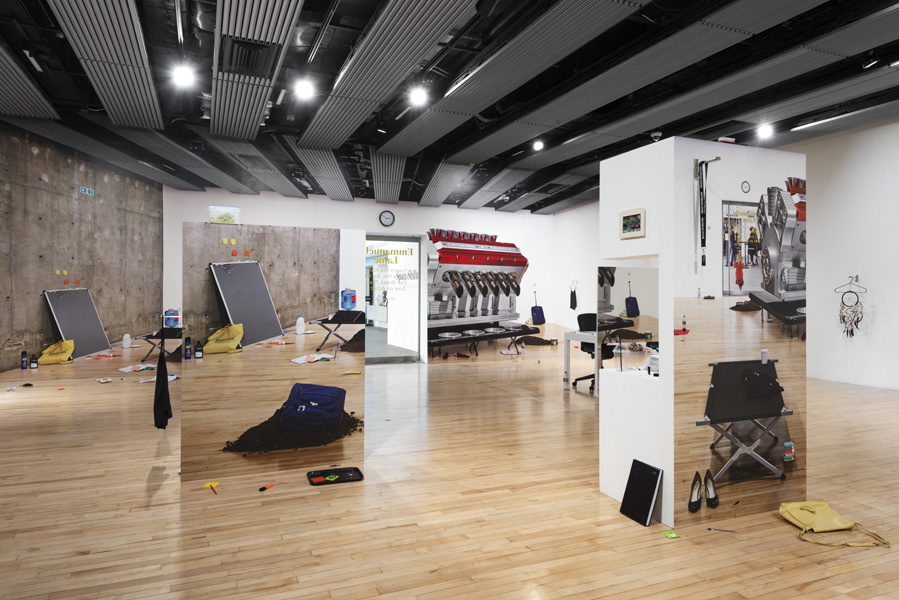
Emmanuelle Lainé, "Learn the Rules Like a Pro, So You Can Break Them Like an Artist!", Hayward gallery, exhibition view, credit: Thierry Bal

Emmanuelle Lainé, "Learn the Rules Like a Pro, So You Can Break Them Like an Artist!", Hayward gallery, exhibition view, credit: Thierry Bal

Emmanuelle Lainé, "Learn the Rules Like a Pro, So You Can Break Them Like an Artist!", Hayward gallery, exhibition view, credit: Thierry Bal
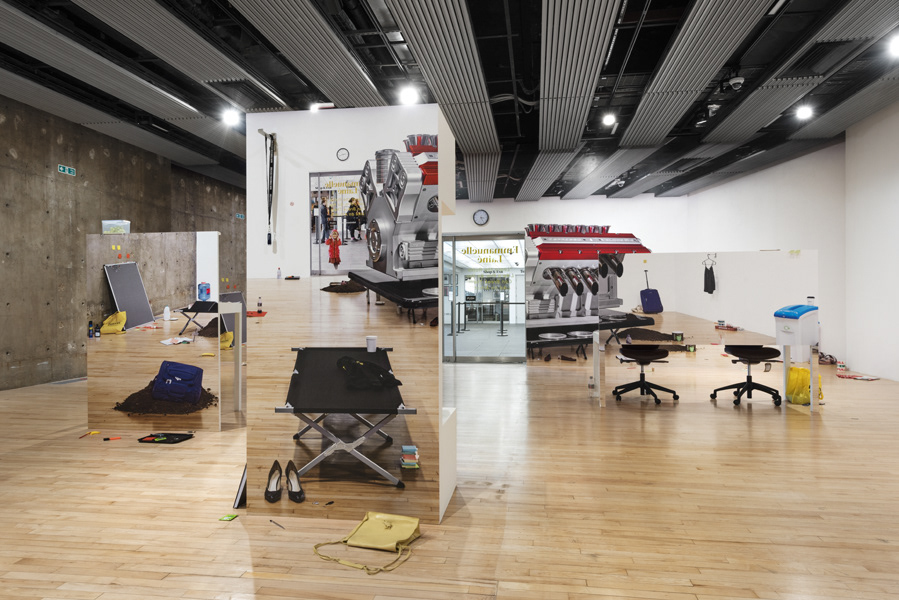
Emmanuelle Lainé, "Learn the Rules Like a Pro, So You Can Break Them Like an Artist!", Hayward gallery, exhibition view, credit: Thierry Bal

Emmanuelle Lainé, "Learn the Rules Like a Pro, So You Can Break Them Like an Artist!", Hayward gallery, exhibition view, credit: Thierry Bal

Emmanuelle Lainé, "Learn the Rules Like a Pro, So You Can Break Them Like an Artist!", Hayward gallery, exhibition view, credit: Thierry Bal
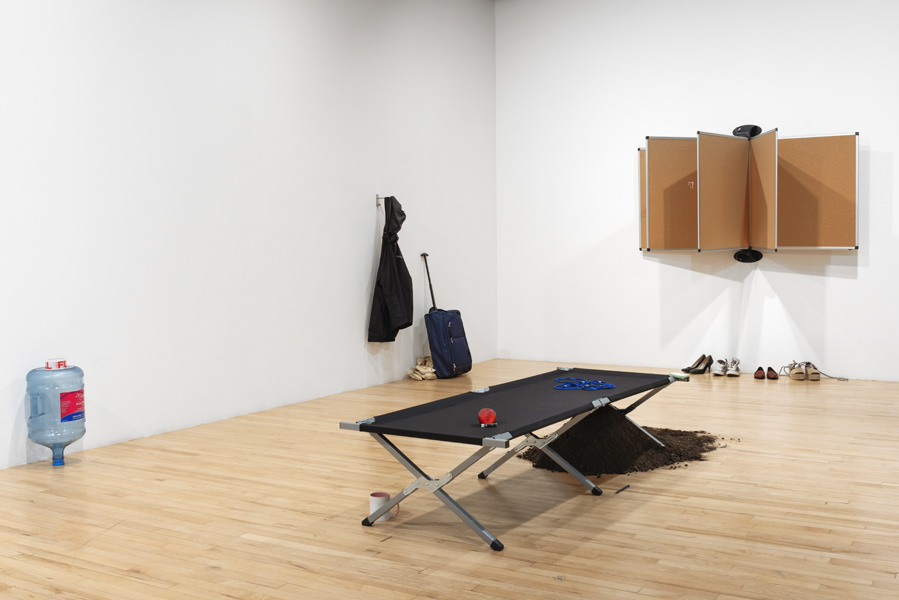
Emmanuelle Lainé, "Learn the Rules Like a Pro, So You Can Break Them Like an Artist!", Hayward gallery, exhibition view, credit: Thierry Bal
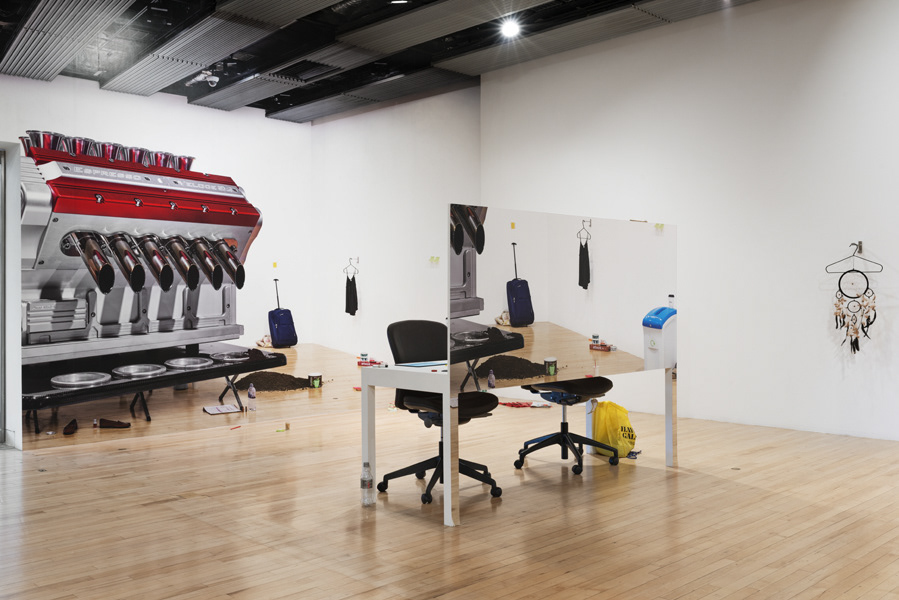
Emmanuelle Lainé, "Learn the Rules Like a Pro, So You Can Break Them Like an Artist!", Hayward gallery, exhibition view, credit: Thierry Bal
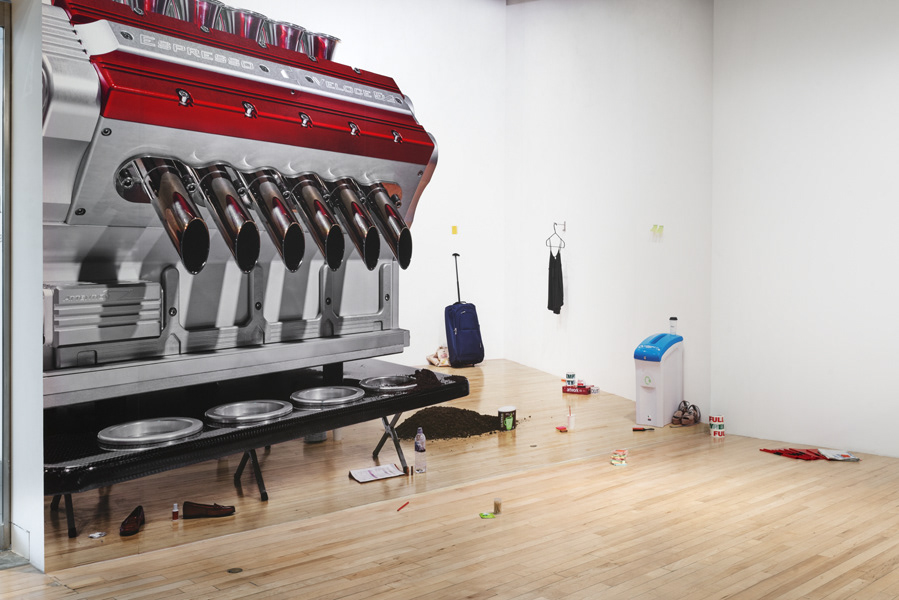
Emmanuelle Lainé, "Learn the Rules Like a Pro, So You Can Break Them Like an Artist!", Hayward gallery, exhibition view, credit: Thierry Bal

Emmanuelle Lainé, "Learn the Rules Like a Pro, So You Can Break Them Like an Artist!", Hayward gallery, exhibition view, credit: Thierry Bal

Emmanuelle Lainé, "Learn the Rules Like a Pro, So You Can Break Them Like an Artist!", Hayward gallery, exhibition view, credit: Thierry Bal
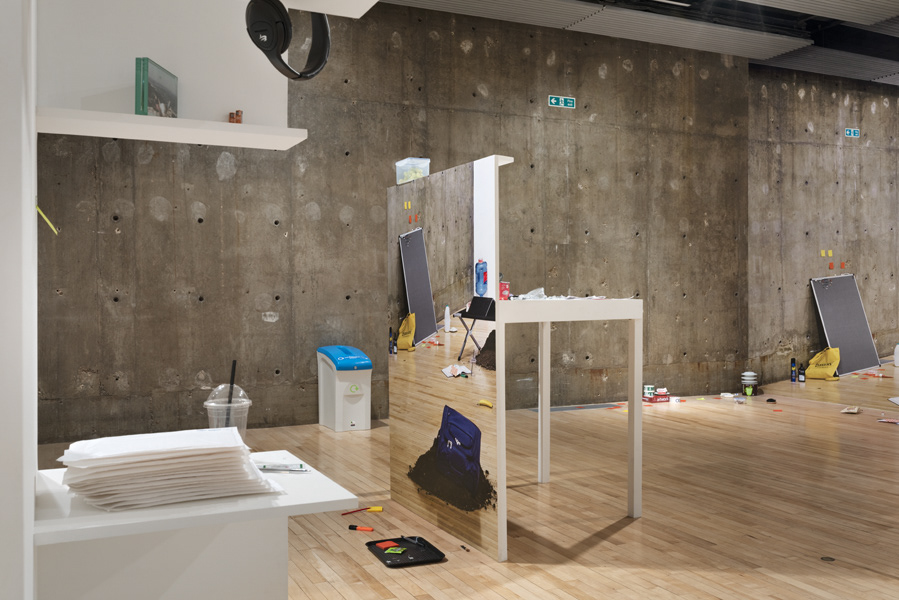
Emmanuelle Lainé, "Learn the Rules Like a Pro, So You Can Break Them Like an Artist!", Hayward gallery, exhibition view, credit: Thierry Bal
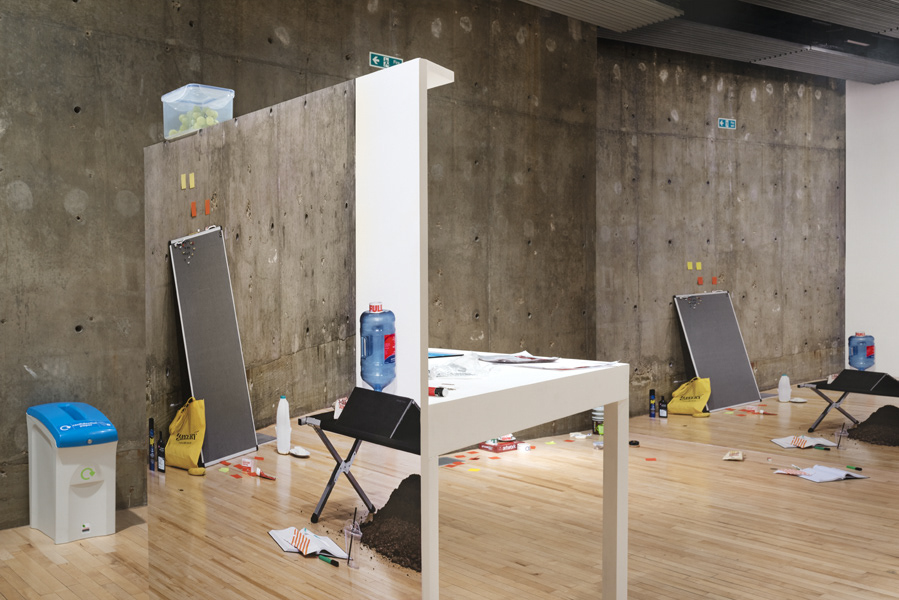
Emmanuelle Lainé, "Learn the Rules Like a Pro, So You Can Break Them Like an Artist!", Hayward gallery, exhibition view, credit: Thierry Bal
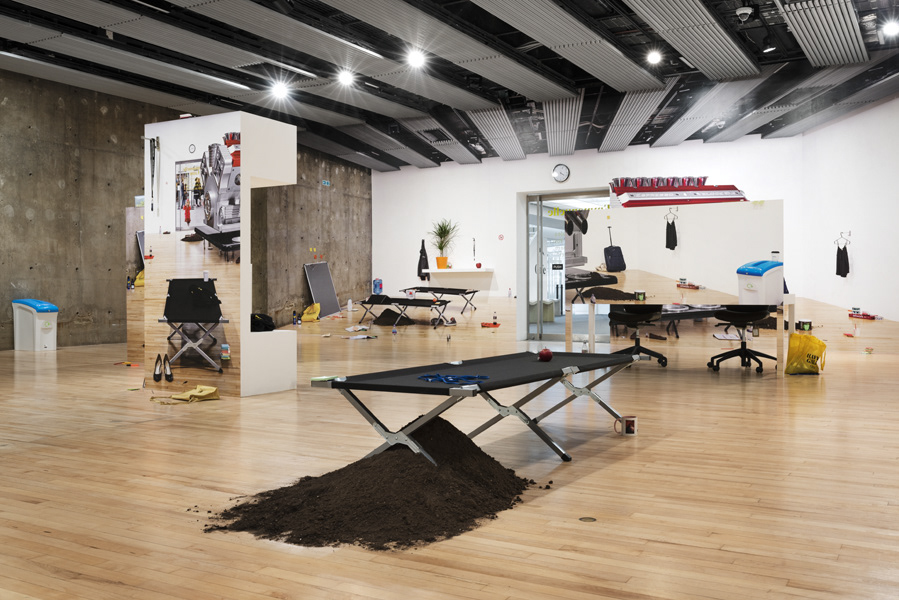
Emmanuelle Lainé, "Learn the Rules Like a Pro, So You Can Break Them Like an Artist!", Hayward gallery, exhibition view, credit: Thierry Bal
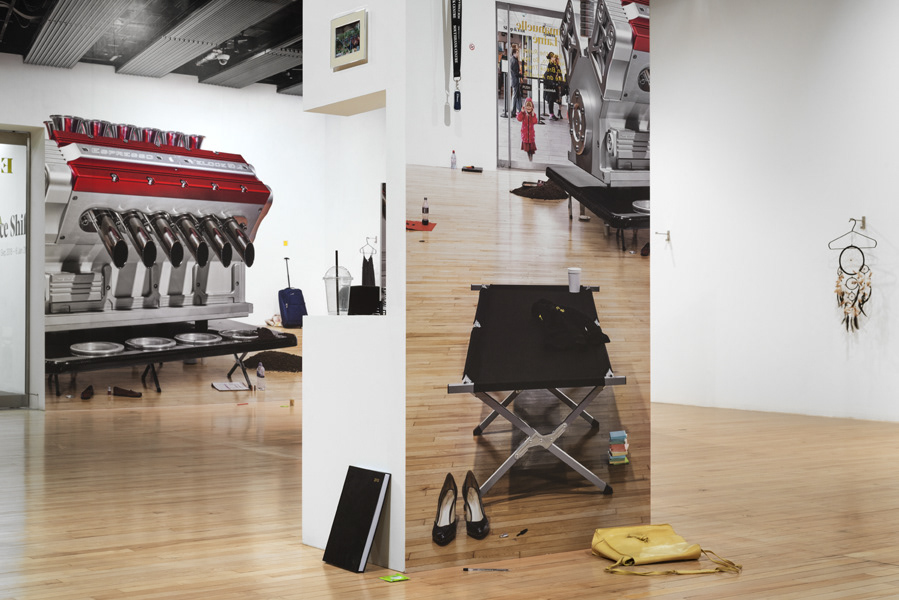
Emmanuelle Lainé, "Learn the Rules Like a Pro, So You Can Break Them Like an Artist!", Hayward gallery, exhibition view, credit: Thierry Bal
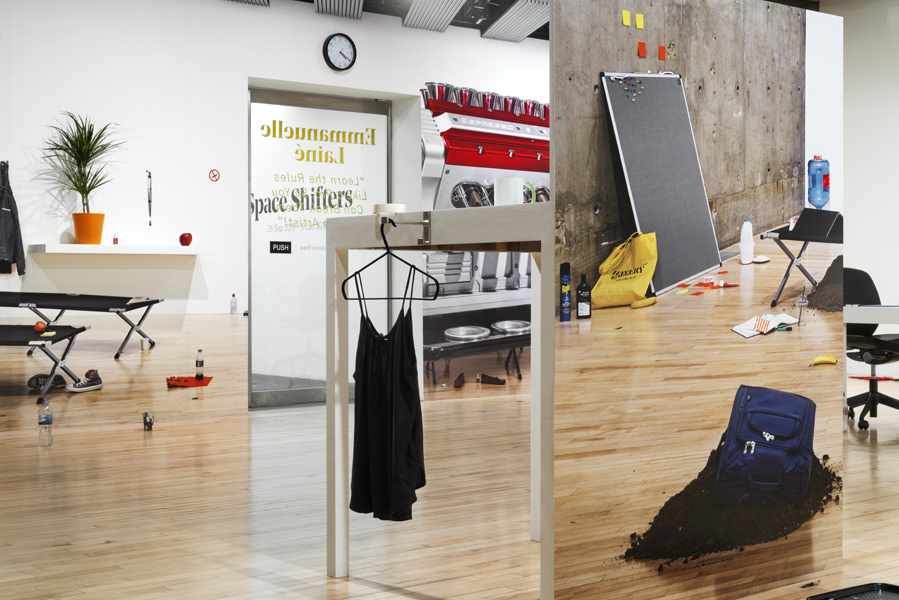
Emmanuelle Lainé, "Learn the Rules Like a Pro, So You Can Break Them Like an Artist!", Hayward gallery, exhibition view, credit: Thierry Bal

Emmanuelle Lainé, "Learn the Rules Like a Pro, So You Can Break Them Like an Artist!", Hayward gallery, exhibition view, credit: Thierry Bal

Emmanuelle Lainé, "Learn the Rules Like a Pro, So You Can Break Them Like an Artist!", Hayward gallery, exhibition view, credit: Thierry Bal
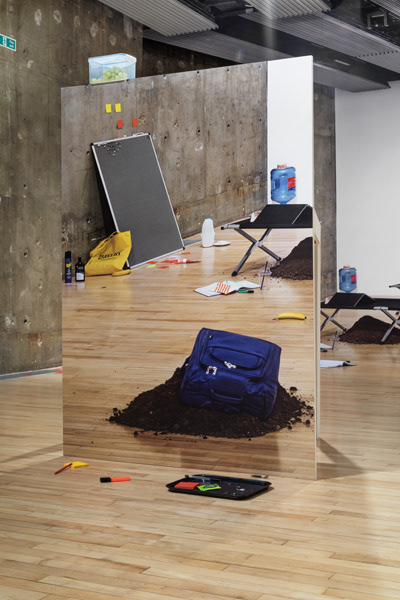
Emmanuelle Lainé, "Learn the Rules Like a Pro, So You Can Break Them Like an Artist!", Hayward gallery, exhibition view, credit: Thierry Bal
Interview with Emmanuelle Lainé
October 2018 Hayward Gallery curators Cliff Lauson and Tarini Malik met with Emmanuelle Lainé ahead of her exhibition in HENI Project Space to discuss technology, the digital image and the way that she constructs her intricate installations.
Your installations often combine lifesized, floor-to-ceiling photographic images with a variety of objects. How did you develop this approach, and how has it evolved?
When I first started making installations in my studio, I brought together lots of different objects that belonged to me and that related to my activity in that space. In these early installations it was my own history and context that linked the disparate objects; they became a kind of cloud of thinking, connected by desire. I began to use photographs within my installations because of their ability to cut time into a single moment, to freeze it and to let somebody – an audience – come inside an activity, have a look, and even construct their own interpretation of this crazy gathering of things.
Later, when I began to make work in spaces that had nothing to do with my own history, the installations became more of a dialogue with each new place and the people who worked there. This way of working – of letting the context of the place enter the core of the practice, and letting it lead or provide the style of the installation – is very important to me, in part because it goes against the idea of the artist as an isolated genius who has no attachments and no constraints, and who works for fun rather than to make a living.
Could you talk about the title of this exhibition, and your interest in places of work?
We live and work in an increasingly precarious world. I want to critique this precarity as well as to show it as a fact. For me, there is something positive about putting on view some of this mess and uncertainty. It also goes against this idea of the individual artist who comes up with a work of art that is delivered to a museum, which then acts like a big fridge and preserves it for posterity. The title of this exhibition, “Learn the Rules Like a Pro, So You Can Break Them Like an Artist!”, is a quote by Pablo Picasso that I encountered on the wall of a coworking space of a society who design working spaces for cities all over the world – or at least in the United States. This quote, written in large letters on the wall, was supposed to provide inspiration for the workers in the space. Strangely, I think that the idea of the artist as a creative genius who works all day because of passion alone – and not for money – is the kind of ideal employee that you find in these co-working spaces that are cropping up all over the world at the moment.
Could you speak about the idea of layering in your work – both conceptual and physical?
My thoughts around layering, and the way that I imagine and design these spaces comes in part from the culture of the digital image. When you’re trained to use editing software you learn to think in terms of layers. In my work, I take this idea of layering and extend it to the space itself. In “Learn the Rules Like a Pro, So You Can Break Them Like an Artist!” there appears to be one large image that captures a single moment in time. In fact, this image layers together at least five or so different moments: the little girl behind the door is one moment or one photo, then there are three different views that we combined to make the panorama, and then there’s the machine. I think of the spaces that I create as being like workspaces, or shelters. I like the idea that the spaces between the layers of the picture might be a place where you want to hide, or disappear. I also like that these layers create a kind of micro-architecture.
You often make reference to machines or technology in your work. Could you say more about this interest?
That’s a long story, but I’d say that I’m particularly interested in our relationship with tools. For me, this is connected to the idea of the cyborg. I’m interested in the approach of people like the philosopher Andy Clark who argue that you’re essentially a cyborg as soon as you hold something as simple as a pencil, and that the body is not a closed circuit, but is made to incorporate tools. Our relationship with technology becomes ambiguous as soon as you ask yourself, ‘Who produces these tools, what for and what is the ideology of this producer?’. When you use a tool, it can enter so deeply into your consciousness that it transforms your understanding of your own body, as well as your understanding of the larger world – that’s why our relationship with technology is so fascinating to me.
How do you go about selecting the objects that feature in your installations?
Rather than choosing objects that appeal to me personally, I try to steal or to borrow objects from the people that I’ve met or am working with for my installations. Here at Hayward Gallery, for example, I asked for items that were lying around the desks of the people that I was working with; things like waste paper bins or notice boards, as well as coffee cups or water bottles that had all been used in the process of making this and other exhibitions. The objects that you see in this installation mostly belong to Hayward Gallery. There are also two items of clothing that belong to me – that’s more or less it.
The construction of time or duration is such an interesting aspect of your installations – from the supposedly instantaneous nature of the photograph to the experience of this frozen tableau that you can examine indefinitely, and yet they are part of the same space...
Yes, they are totally part of the same space, which I hope is a kind of allegorical one. To me, these installations are visual and expressive at the same time as requiring a kind of detailed semantic deciphering. Together, the many different objects in the installation build an impression of an activity or event that has taken place in the space over a long period, that seems in fact to have been going on right up until the moment that the exhibition started. They create a kind of nature mort, or still life. As a spectator entering the space you have to survey the entire scene before attempting to reassemble all of the different elements into something that is in fact lost forever.
“Learn the Rules Like a Pro, So You Can Break Them Like an Artist!” is accompanied by a new piece of fiction by writer and editor Ben Eastham, inspired by Lainé’s site-specific installation. A live reading of this text forms part of the exhibition’s public programme. Read more about Emmanuelle Lainé on www.contagiousspaces.world, a digital platform that functions as an extension of the artist’s work.
Places and Things: a response to Emmanuelle Lainé
Monday, December 10, 2018 - 10:00
Places and Things is a specially commissioned piece of fiction by writer and editor Ben Eastham, inspired by Emmanuelle Lainé’s exhibition “Learn the Rules Like a Pro, So You Can Break Them Like an Artist!” in HENI Project Space.
Ben Eastham is a writer and editor based in London. He is founding editor of The White Review and associate editor of ArtReview. His writing has featured in publications including the London Review of Books, frieze, the New York Times, Mousse, the Times Literary Supplement and many others. He co-authored My Life as a Work of Art (2016) with Katya Tylevich and was associate editor of documenta 14.
Introduction from the author
Expected to deliver long speeches without reference to notes, the ancient Greeks developed an elaborate strategy. In preparation, the speaker would memorise a walk through a real landscape – a city, for example – and in familiar locations ‘store’ mental objects and images carrying associations that could serve as prompts. A decorated shield beneath a bridge might, therefore, serve as a reminder to move on to that part of the lecture which discusses military matters (in English, ‘topics’ derives from ‘topoi’, meaning the places in which these subjects were stashed). Giving his speech, the orator would retrace the route in his mind, picking up the carefully stationed ‘topics’ that would link the different parts of his story together.
This text places a selection of (misremembered, often manipulated) objects and images from Emmanuelle Laine’s show along a route familiar to the author and attempts to cobble together a story from the combination. The writer and artist bear no relation to their real-life equivalents. Instead, treat this exercise as a weak joke at the art critic’s presumption that is possible to translate someone else’s memories and ideas, expressed in a different medium, into a meaningful text.
Places and Things
We shall imagine the man in question as lying ill in bed, if we know him personally … And we shall place the defendant at the bedside, holding in his right hand a cup, in his left, tablets, and on the fourth finger, a ram’s testicles.
Anon, Ad Herennium
”
Every sentence is a scale model of the universe rendered by an idiot child in candlesticks and string.
Flaubert
”
It was late November, a few minutes past six in the evening, halos over the streetlights. The artist and the writer sat at the counter of the café on Junction Road. The artist wore a black windcheater… what the writer wore I can’t recall. Forgive me, I’m still learning, we’ll come back to it. But the café had an Italianate name, of this I am certain. A red Vespa occupied one corner and, on a shelf at the back, was a yellow Olivetti beside an arrangement of dried flowers in a vase with a geometric pattern that bled into the blue-green wallpaper. I can see it now, feel the heat of the bodies and the steam, hear the scraping of chairs and the hiss of the gigantic espresso machine operated by the kind of dark-eyed boy destined to die by drag race in a black-and-white switchblade romance. His serviette was slung like a mechanic’s rag over a burly shoulder, his mind attuned to the sputtering metal pumps and valves.
The writer turned to the artist to ask whether … no, hang on, sorry, allow me to go back a little, because it’s important to note, before we get to what the writer asked, it’s important to note that on the shelf beneath the Olivetti and the flowers was a selection of board games. The games had been purchased on a whim by the owner from the neighbouring charity shop, momentarily seduced by the spirit of gentle bonhomie he imagined they might inspire among customers. One of those board games – it may have been a jigsaw puzzle, let’s say it was a jigsaw puzzle, though it hardly matters – was contained in a red box which carried across its longest edge the word ‘artwork’. Beside it on the shelf was a roll of packing tape on the surface of which three letters were visible: O-U-T. OK, we’re back up to speed...
So, the writer turned to the artist to ask whether they should go out to the opening, and whether it would be any good. By ‘opening’ he meant the preview of an exhibition of contemporary art. And by ‘good’ he was referring not to the art but to the likelihood of there being free drinks. The artist shrugged to mean ‘sure’ and so they paid up. On their way out of the café they passed a young man with a splash of red paint across his face working at a table that, because it was wedged into a recess, was the café’s warmest, most coveted and hence most memorable spot. He had set up a desk in the nook, and beside the notebook in which he was writing were a tube of correcting fluid, two black A4 folders and two highlighter pens – fluorescent orange and yellow – that brought to the writer’s mind glow sticks. That’s it, sticks.
‘Let’s take the underground,’ the writer said to the artist.
‘It’ll be hellish at this time,’ she replied, ‘but it’s the best way across the river.’
They said some other stuff besides as they crossed the road to Archway station, passing nothing worth noting, moving through streams of let’s just say thin white noise, through the gates and down into the so-called bowels of the earth. They moved dutifully down the platform to a spot on the Northern Line that, when the train doors opened, gave access to the rear carriage, which was reliably quieter than the others. The spot was marked by a tube map on the wall and it was here that the writer always stood. He turned now to the artist, and said,
‘Did you know that for most of the twentieth century printed maps were sprinkled with errors to catch out plagiarisers?’
‘Everyone knows that,’ said the artist.
‘But did you know that they were called trap streets and paper towns?’ insisted the writer. ‘There’s Argleton in Lancashire, for instance. It’s not there.’
‘Perhaps Waterloo is a fictional stop on the underground, invented by the transport authorities to protect the integrity of their maps,’ said the artist.
‘But I’ve been there,’ said the writer. ‘Hundreds of times. Like every week for the past ten years. Waterloo is one hundred per cent there.’
‘But what if London is a paper town, and its streets extension trap streets, and we’re stuck in it?’
‘Then we’re fucked,’ said the writer.
The train pulled onto the platform, and the artist and the writer boarded. It’s not important whether it was full or not, let’s not get bogged down in details. Although I previously stated it was rush hour and also that they had sought out a particular spot on the platform to avoid the crush so, just for the sake of narrative continuity, let’s say that there was only a single seat available. The writer offered it to the artist but the artist gave him the look that means FFS, and so for the sake of argument let’s say they both stood up and clung onto the plastic loops that dangle from the metal beams over the benches and tried not to step on the toes of the man in a blue suit and red tie who had sprawled across the corridor and was talking very loudly to his dead-eyed girlfriend about a flat he had sold to some poor mug earlier that day at a mark-up that would entitle him to however much commission, the smug prick, and the writer and the artist shared a look that said ‘estate agents’ meaning ‘the worst’ and...
Ah, I’ve lost my train of thought. I got waylaid there. I’ve missed something. Where were we? We’ll pick it up at Waterloo.
[...]
The artist and writer emerged from the underground and into the station concourse. Let’s say the station is empty, never mind the time of day, that was the mistake we made on the underground, all those distractions. They moved across the open space towards platform 17, which until a few years ago served the train back to my hometown and the bench on which I used to read my book when I was waiting for her to visit me. The writer approached the bench and, having got down on his knees, reached underneath it and pulled out from the shadows a single hi-top trainer with an apple wedged into the hole between the shoe’s tongue and topline. The writer placed the sculpture on the wooden seat of the bench and stood back to contemplate it.
‘What the hell are you doing?’ said the artist.
‘I always leave things here, under this bench,’ said the writer, unconvincingly.
‘That’s insane,’ said the artist. ‘Why would you put an apple in a trainer and leave it under a bench in a major transport hub?’
‘I can’t quite remember,’ said the writer. (I’m projecting a little here.)
‘And this is definitely yours? It’s not possible that someone else has left this here and you’ve picked it up by accident or, worse, that someone knew you were coming here and planted this here to confuse you?’
‘No,’ said the writer, but he was beginning to doubt. ‘That would represent a really major problem, like an existential-level problem, not to mention lots of other very complicated metanarrative issues that I’m not entirely on top of.’
‘Also, why is the station deserted?’ said the artist. ‘It was pretty busy on the tube so it makes no sense that there is no one here. Has there been a bomb scare? Should we be running?’
Sorry, this is a bit of a mess. Like I said at the start, first time I’ve done this. I can’t imagine what the apple-trainer sculpture was supposed to signify, how it moves the story along. Let’s think. The apple … maybe innocence and a paradise now lost? The hi-top trainer reads like a symbol of my teenage years in drainpipe jeans and leather jackets, a time to which I wish I could return. So perhaps this combination of signs here, at the place where I once met my girlfriend off the train, suggests an attempt to recapture a past love. Maybe the writer and the artist had once been together, and this will be the story of a romance rekindled by a profound experience of art.
That makes sense, I think. You can imagine it, you’ve probably read short stories like these. People coming to terms with their disappointing lives, realising they were in love with the people they had grown up with, or at least that they would have to settle for the slightly more withered version of the person they had once desired because they had come to terms with the fact that they were no longer, themselves, particularly desirable. That could have been what I had in mind, and apples and so on seem like suitable symbols, better than the dead animals that people are always encountering in short stories and having epiphanies about. And what the role of art in creating the conditions under which love can flourish! Because what else is art but romantic opportunity and highbrow aphrodisiac? That must be it. Right, back to it.
‘Do you remember when we used to go out, back in the day, those days, those hazy summer days we spent together, weren’t they just magical?’ said the writer.
‘We used to go out?’ said the artist.
‘It’s the only logical explanation,’ said the writer.
‘I don’t think we did,’ said the artist. ‘I’m pretty sure I wouldn’t have gone out with you. Is this because of the apple and the trainer?’
‘Maybe?’ said the writer.
‘So you’re using a speculative interpretation of two objects found beneath a bench in a train station to suggest that we have unfinished business romantically and figuring it, perhaps, as an omen of our imminent reconciliation? Presumably our sexual reconciliation, maybe even this evening? You’re saying that a trainer with an apple on top portends the direction tonight is going to take, almost even obliges me to …? You know that’s creepy, right. It’s like pre-emptive gaslighting or something and, you know, that kind of behaviour, in the current ideological climate…’
Right, right, let’s move on. We’re not getting anywhere. Let’s say that the artist trails off here. The writer stows the trainer and the apple in his gallery-branded tote bag. Its meaning will come back to me later. Or perhaps the artist will be less truculent, I don’t know what I did wrong at the start of the story that she has to behave like this. But let’s get out of the station before we get completely waylaid.
‘Shall we have a drink before we get to the opening,’ said the writer, apropos of nothing.
‘Sure,’ said the artist. ‘But don’t try anything.’
The artist and the writer walked the four minutes to the King’s Arms in silence. Not an acrimonious silence, or a pregnant silence, or a pensive silence, but a signifying nothing silence. An absence, a void of meaning. Neither were there any crowds around them, nor did they walk uncomfortably close to or meaningfully far apart from each other. Let’s just for this part of the journey imagine the artist and the writer surrounded again by a grey fog, as if this were a scene in a film recorded onto a VHS tape which has been watched and rewound so many times that when you fast-forward it, as we’re doing now, the scratches and grazes on the film stock obscure the image preserved upon its surface. But that’s not intended as a Richteresque visual metaphor or comment on history either, don’t overinterpret. They just walked to the pub. A totally normal, instantly forgettable walk into which nothing should be read.
[…]
The pub, which is totally clear in my mind, had wooden flooring and wire-framed chairs beside roughly hewn pine tables in the manner of a Scandinavian farmstead, even though this was maybe two hundred yards south of the Thames, and understated standing lamps and nondescript paintings in gilt frames. At the horseshoe bar they ordered drinks. Two pints, let’s say. Of ale.
‘Two pints of ale,’ said the artist.
‘Hello missy,’ said the landlord, who looked as landlords should, big-boned and ruddy cheeked. ‘I was beginning to wonder how long it would take you to get here.’
‘Have we met?’ said the artist. ‘Also, don’t call me missy.’
‘Oh, look at you!’ said the landlord, hoisting his hands up in mock surrender. ‘Feisty!’
The artist said something that can’t be published by a public museum.
‘Ooooh, a real firebrand!’ the landlord bellowed to the room at large. And then, lowering his voice, leaning in and winking at the artist, ‘I’ve got your package all ready for you, don’t you worry. It was dropped off last night by a man wearing a big hood, all wrapped up against the cold. Not a big talker. Very sinister, ominous even. Give me a minute!’
The artist looked at the writer, who shrugged. The landlord moved through a door behind the bar. In the meantime, their two pints of ale were delivered by another barperson who I won’t describe here, because I need to keep hold of the story’s thread, which is all over the place, as you’ll have noticed. Oh, and this person also delivered to the artist and the writer a plastic bottle of water, for which they had not asked, but which they should have ordered, or would have ordered had I not forgotten momentarily about it. The writer carefully placed the plastic bottle of water on the floor and left it there. The artist looked at him suspiciously but asked for no explanation, for which the writer was grateful.
One minute passed, uneventfully. And then another door at the far end of the bar – which was neither remarkably busy nor noticeably quiet – creaked open and the landlord emerged. He led with his back, pushing the door open with his shoulder, because behind him he was dragging a fully extended camp bed, which he laid out on the floor in the middle of the pub. He moved back through the door and returned with a tin bucket filled with soil. He upended this onto the floor beside the camp bed, creating a small hillock of dirt. The locals seemed unperturbed by this intervention. The landlord retreated through the door, taking the empty tin bucket with him, with another wink at the artist, who did not return it. The writer had been moved by the camp bed and pile of dirt incident to look out of the window. He looked ‘wistful’. He was ‘in a reverie’, let’s say.
‘Remember that time we went camping together beside the waterfall, toasted marshmallows over the fire pit we cut into the earth?’ said the writer.
The artist rolled her eyes. ‘Not this again.’
‘No, we did,’ the writer said, ‘and I just remembered I’ve a picture of you to prove it. The landlord laying out the camp bed, which was admittedly pretty weird and didn’t serve any obvious purpose, helped to jog my memory. And that reminded me that I always carry this around with me,’ he said, pulling an old photograph out of the inside pocket of the long, grey woollen coat that I remember now he was wearing the whole time, including back in the café, ‘because I never got over your breaking up with me to go to art school. A memento, you might say.’
The artist took the picture, which resembled a holiday snap taken in the mid-1990s and showed her lying along the top of a low wall in front of a bright blue sky.
‘This doesn’t prove anything,’ she said. ‘We could have been on holiday together as friends. Or maybe someone else took this. You could have stolen it from me. There’s nothing here to suggest that we were camping or had built a fire pit or anything like that. It looks pretty hot in the picture.’
The writer took a deep sigh. ‘I wish you’d just accept the facts, here.’
‘You’re getting it all wrong,’ said the artist. ‘We can’t have gone out. You’re gay.’
‘Am I?’ said the writer, taken aback. ‘No, I’m not.’
‘You are,’ said the artist. ‘You try to bury it, but you made your bed a long time ago.’
He brooded. Meanwhile the landlord, who had returned to serving customers behind the bar, had also changed into a silk negligee that, pulled taut across his broad shoulders and beer-swollen stomach, stretched down only so far as the top of his hairy thighs. His substantial frame was otherwise exposed to the elements bar a pair of wedge heels, their thin straps encircling his swollen feet like string around a ham, on which he now tottered uncomfortably over to the table at which the artist and the writer were sitting.
He handed a padded envelope to the artist with a conspiratorial nod. It was stamped ‘time sensitive’.
Inside the envelope was a 9 x 7” postcard. And a plastic lighter, too. The package was, let’s say, obviously significant. Over two sticky notes attached to the postcard was the following message:
Dear Lillian Virginia Mountweazel,
for too long this magazine has turned a blind eye to your esquivalience. File the photographs or face the consequences. You should read the word ‘consequences’ and imagine it being delivered in person by a heavyset man in a bomber jacket with a Russian accent. As he speaks the word he unclasps his hands and spreads them outwards while waggling his fingers in the manner of a bomb detonating and flinging out shrapnel. This is your final warning. Use the enclosed lighter to burn this message after reading.
Yours EXPLOSIVELY,
Combustibles Magazine
The artist went to the bar and motioned to the landlord.
‘This isn’t for me,’ she said. ‘It’s for Lillian Virginia Mountweazel.’
I may have missed something. In retrospect I may have taken a wrong turn. Perhaps I should have started before the café, or something passed me by when I got distracted on the train. I may have left something crucial on the writer’s mantelpiece. Too late now, best to plough on.
‘But you are Lillian Virginia Mountweazel,’ said the landlord. ‘Who else could you be?’
The artist hesitated. She looked back to the writer for reassurance. He shrugged his shoulders and held out his hands, palms turned to the ceiling.
‘Don’t worry Lilli,’ said the landlord, leaning over the bar to whisper into her ear. ‘You’re among friends.’
At which everyone in the bar turned around to face her and, in perfect time, tapped the index fingers of their right hands to their noses with their left eyes closed. On having done so they returned to their drinks.
Through the hubbub, the artist returned to her seat. She seemed a little shaken. The writer was admiring himself in a pocket-sized vanity mirror on the rear of which was emblazoned the figure of a dancing monkey.
‘Let’s get to the gallery,’ the writer said to the artist, ‘we’ll work all of this out while we walk.’
[...]
The artist and the writer arrived at the gallery, laughing and patting each other on the back.
‘What a relief!’ laughed the artist.
‘I know!’ responded the writer.
Make of that what you will. Use your imagination. Fill in the gaps. I’ve tried my best. I can’t do everything for you.
The gallery was accessed via a glass door beside the ticket office in the lobby, which was thronged with people. A young girl had pressed herself against the door and was looking into the crowded exhibition space. The writer crouched down on his haunches beside her and tapped the girl lightly on the shoulder.
‘What can you see?’ asked the writer.
‘I see a recycling bin,’ said the girl. ‘For waste paper.’
‘What’s that supposed to mean?’ said the artist.
‘You have to ask?’ said the writer.
END